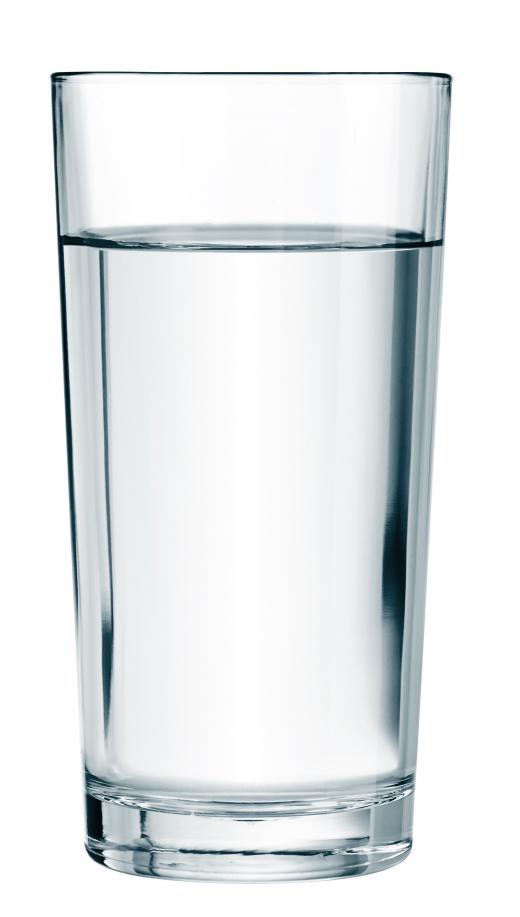What are Trihalomethanes?
Trihalomethanes are a group of chemicals that include chloroform and structurally related compounds. Some are used industrially as refrigerants and solvents. The term is generally applied to a subset of these compounds that are possible carcinogenic by-products of the chlorination of water.
The disinfection of water with chlorine or bromine has eliminated many previous water-borne diseases, such as dysentery and cholera, which used to kill large numbers of people. One side effect of these treatments, however, can be the formation of disinfection by-products. These by-products are formed when decaying natural, organic matter in the water reacts with the chlorine or bromine used in disinfection. These can also be produced in swimming pools from the reaction of chlorine with sweat, skin particles, or urine.

One group of chemicals produced is chloroform, bromoform, bromodichloromethane, and dibromochloromethane. Even though there are many compounds that can, chemically, be considered trihalomethanes, these four compounds are usually what are meant when the term is used. The sum of them is referred to as Total Trihalomethanes (TTHM). Chloroform is generally the most prevalent of the group, and these are found in virtually all tap water that has been chlorinated.

The health effects of trihalomethanes are controversial within the scientific community. Studies with lab animals have shown increased cancers at high doses, but such studies cannot always be extrapolated to humans. Other studies have compared the rates of cancers to levels of TTHM exposure in large numbers of people, and these results have also been contradictory. There have also been contradictory studies of the effects of these substances on human development and reproduction.

The United States Environmental Protection Agency (EPA) has concluded that there is enough evidence to establish regulations on TTHM in drinking water. There may be a slight risk of increased colorectal or bladder cancer if one drinks water contaminated with trihalomethanes at a level over 80 parts per billion (ppb) for a lifetime. Some U.S. states and bottled water companies limit levels to as low as 10 ppb. Many other countries also regulate the levels in their water supplies.

Most of the exposure to trihalomethanes comes from consumption, either from drinking water or cooking with it. Swimmers can absorb these compounds through their skin. Some trihalomethane compounds can also become volatile and evaporate into the air when one showers. These can then be inhaled.
Trihalomethane removal can be performed using an activated carbon filter, of which there are many types. Coconut shell-based carbons appear to be the best type of filter for removing small, organic compounds such as these. Reverse osmosis unit filters do not remove them, but reverse osmosis systems do have additional carbon filters that would remove trihalomethanes.

Chemically, a trihalomethane is a derivative of the carbon-containing compound methane (CH4), in which three of the hydrogen atoms have been replaced with a halogen atom. This can include chlorine, bromine, fluoride, or iodine atoms. Trihalomethanes can have multiple halogens of the same type.
While there is concern about carcinogens in drinking water, one should note that TTHMs pose no immediate risk, and might only manifest effects after decades of exposure. The risk of not disinfecting water is very high, especially with frequent pollution of fecal bacteria from sewage. One must balance the benefits and risks of these two factors.
AS FEATURED ON:
AS FEATURED ON:















Discussion Comments
how can a hydrogen atom get replaced with a halogen atom if it does not occur naturally.
Post your comments